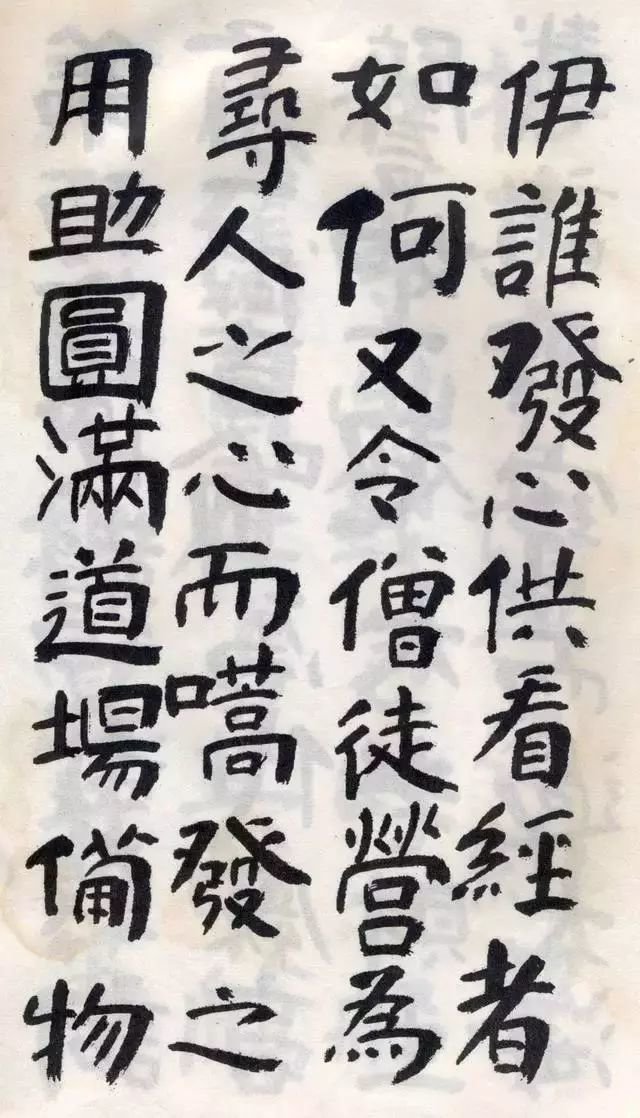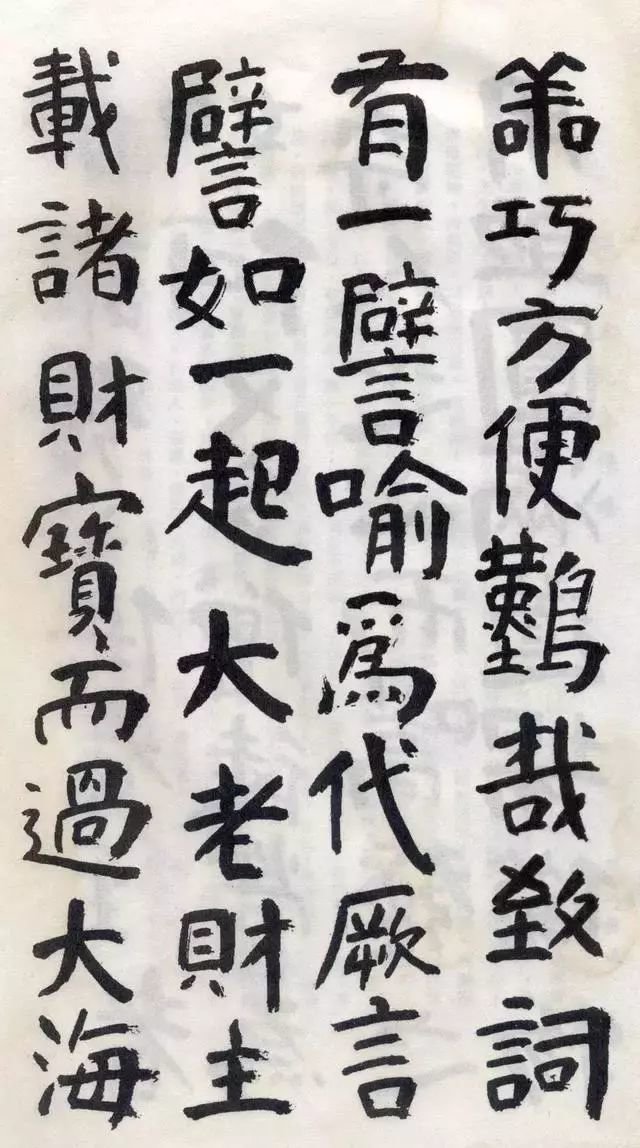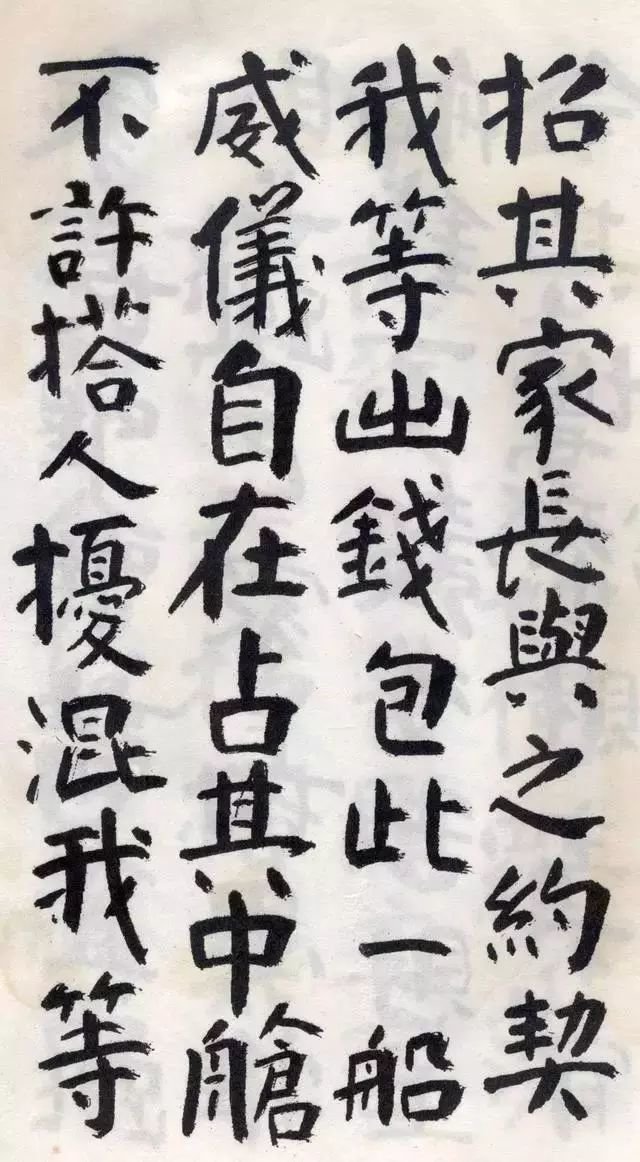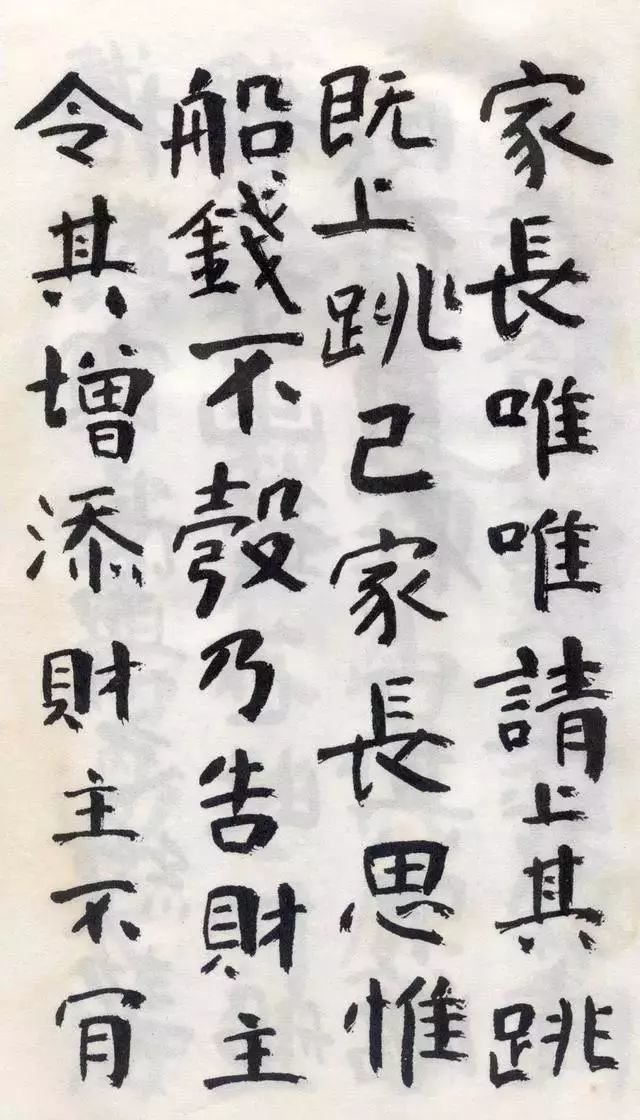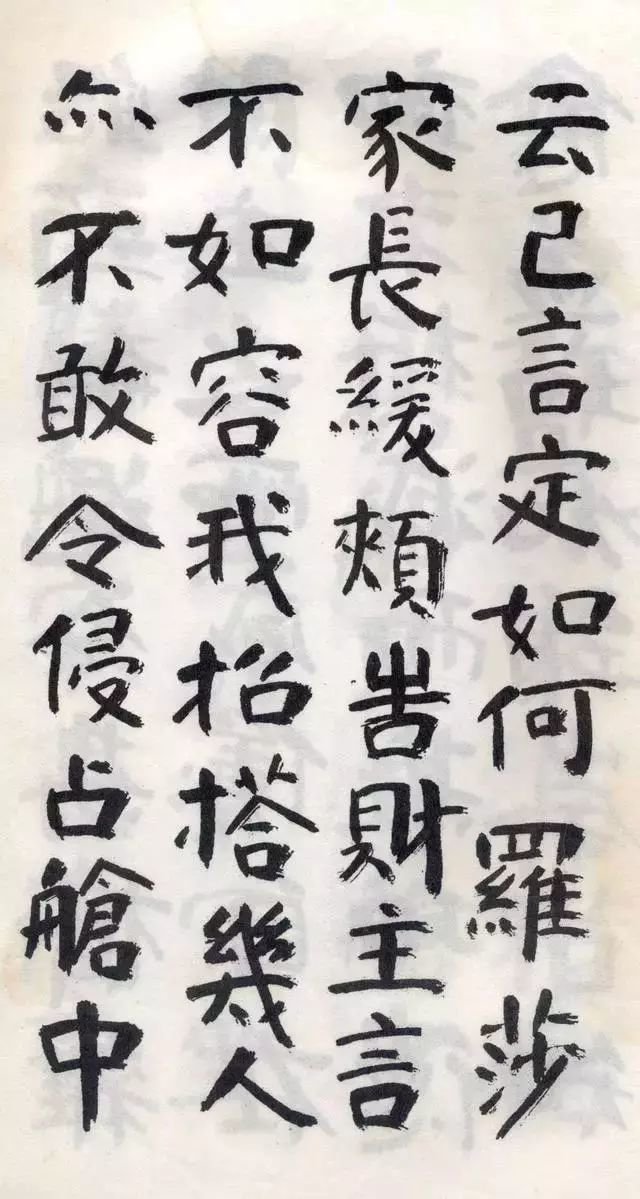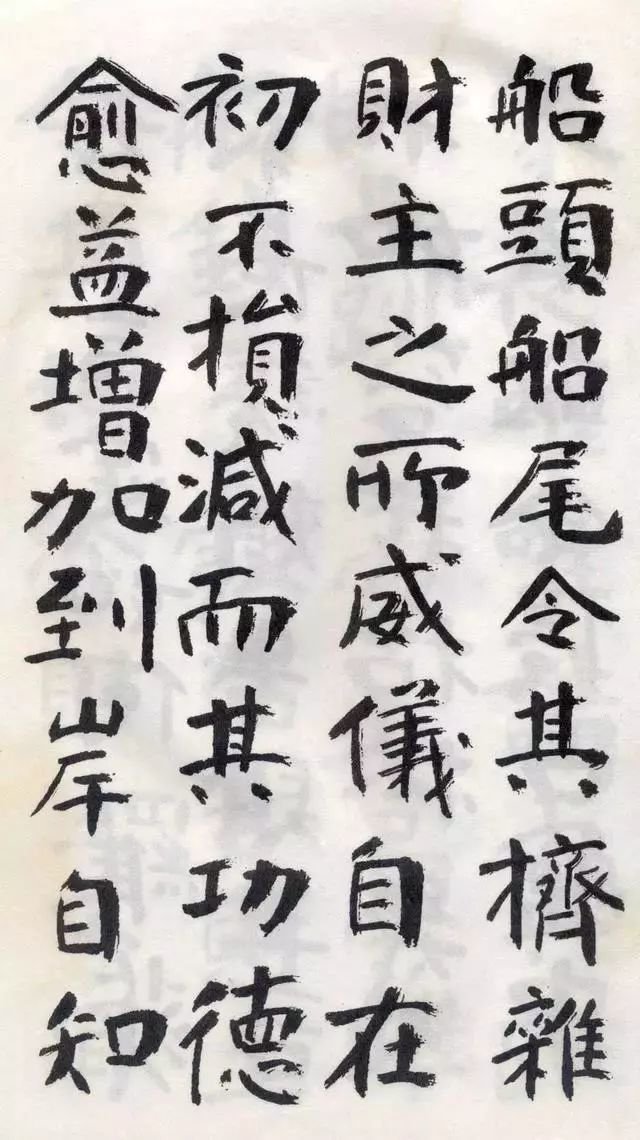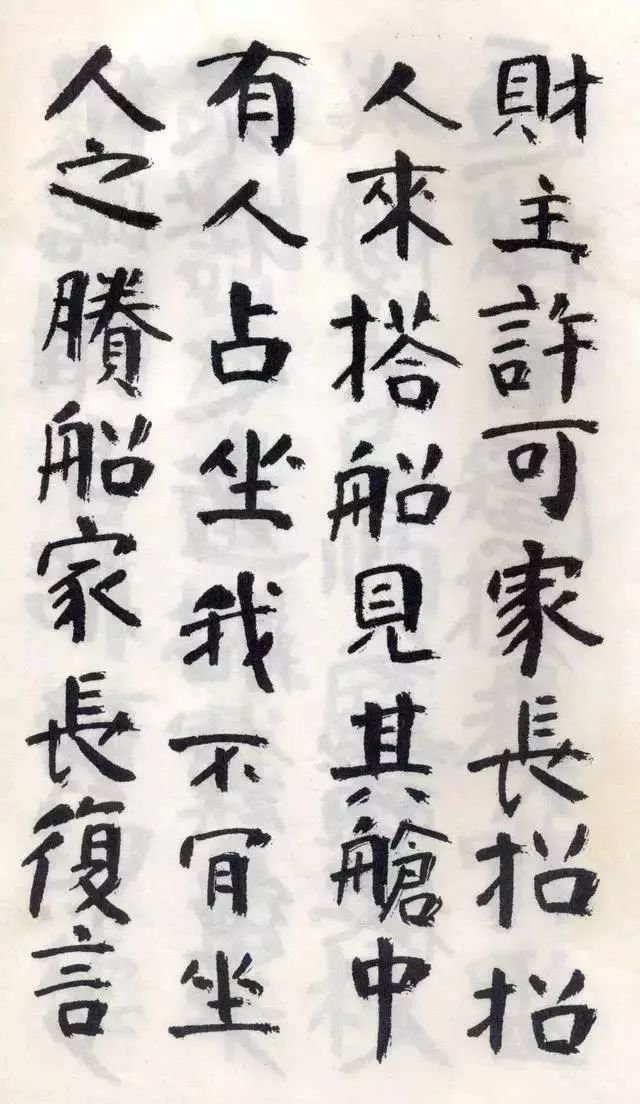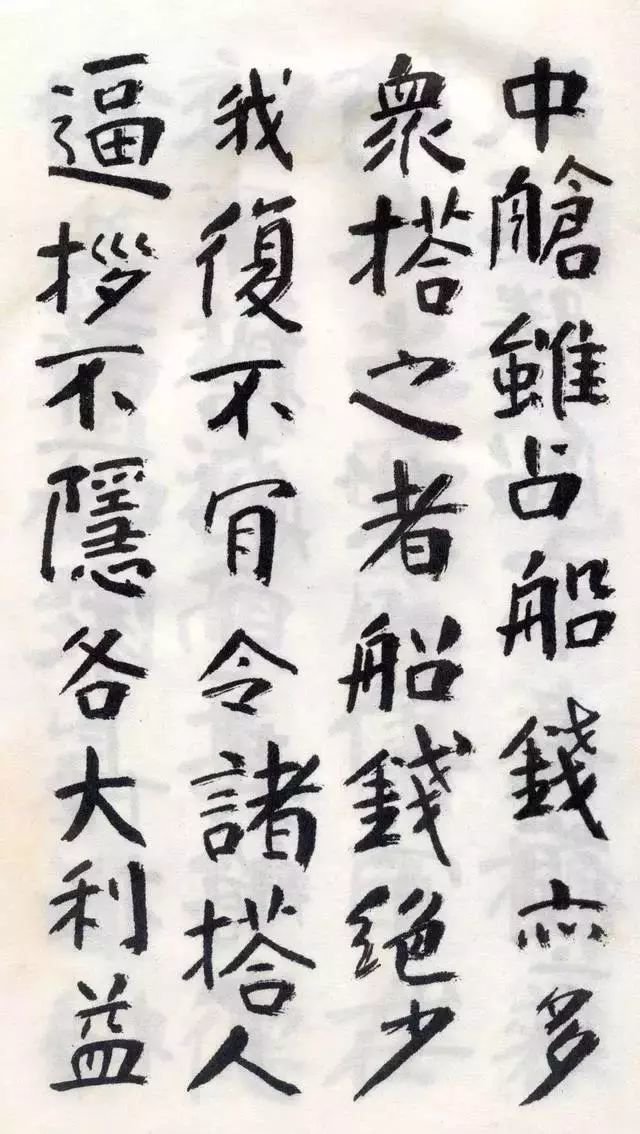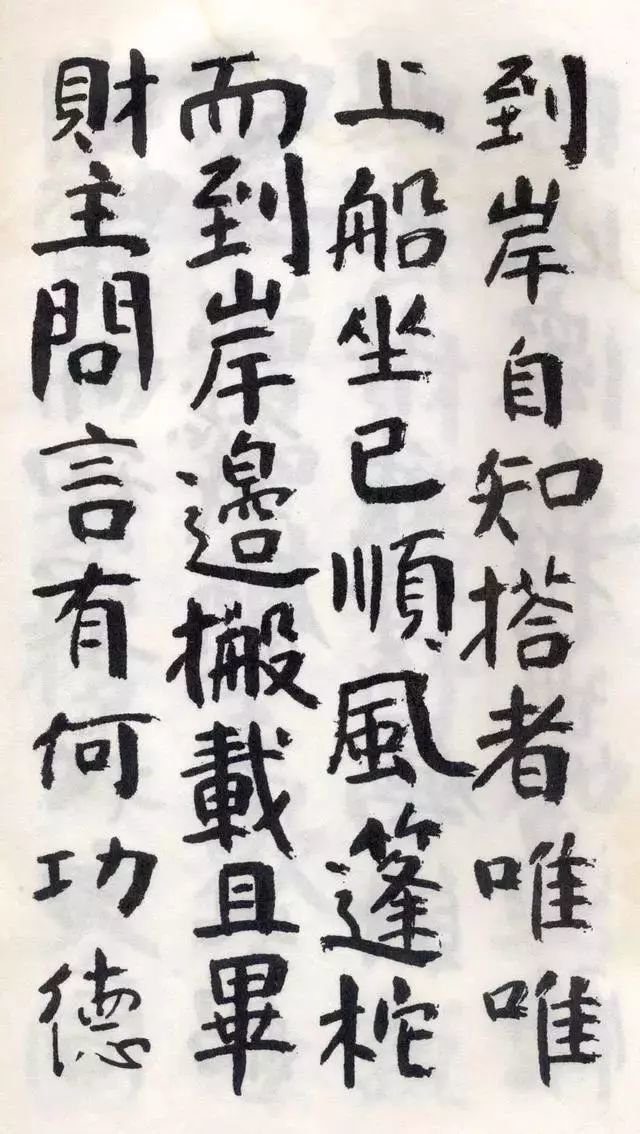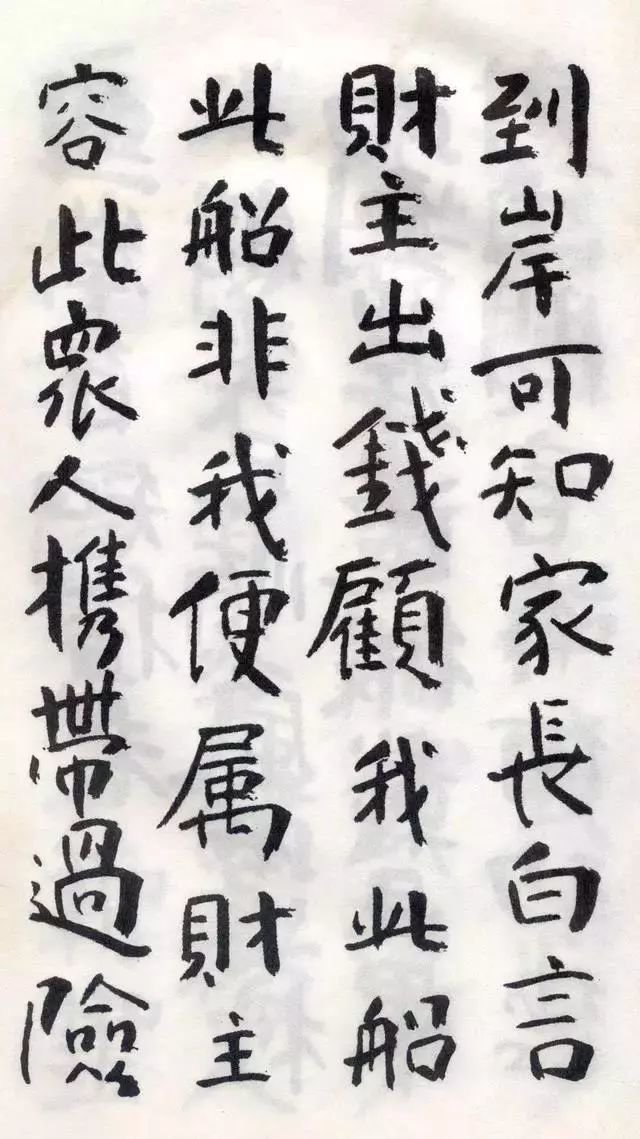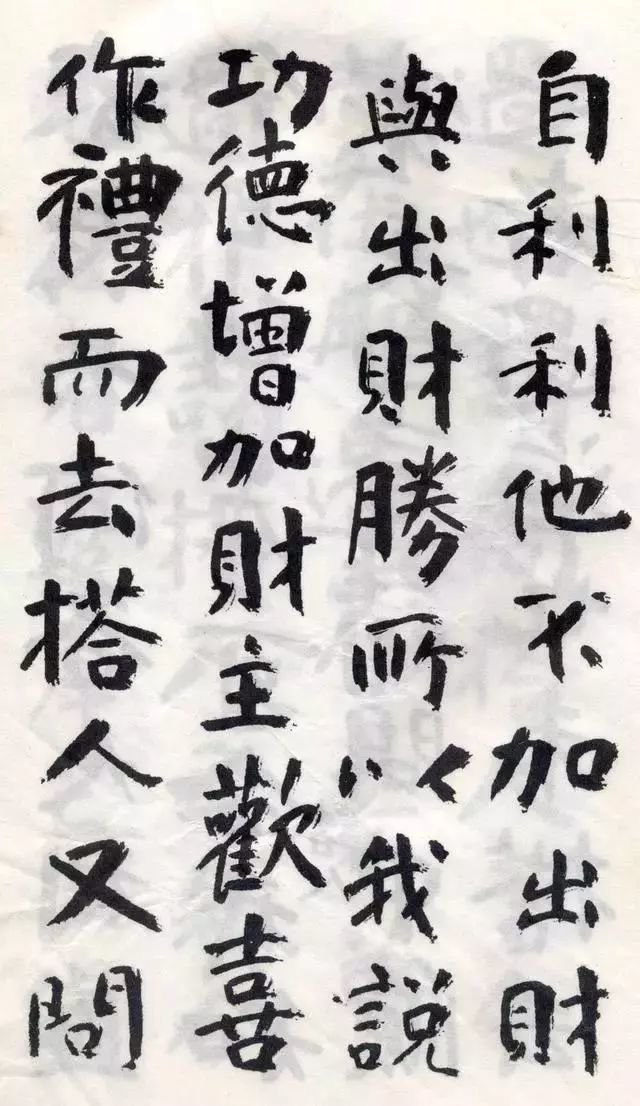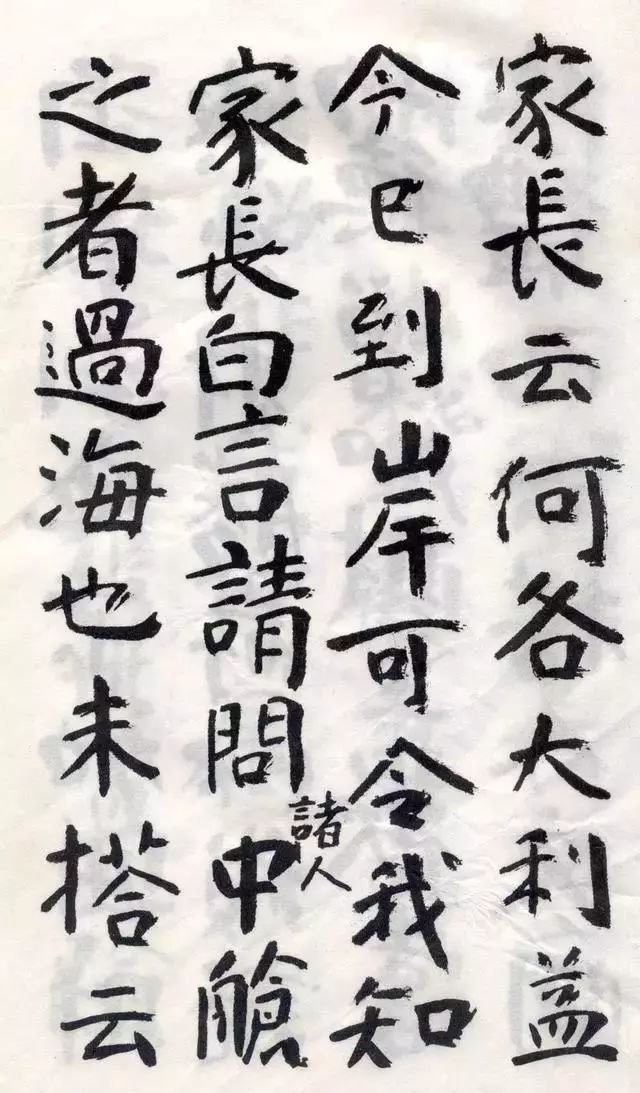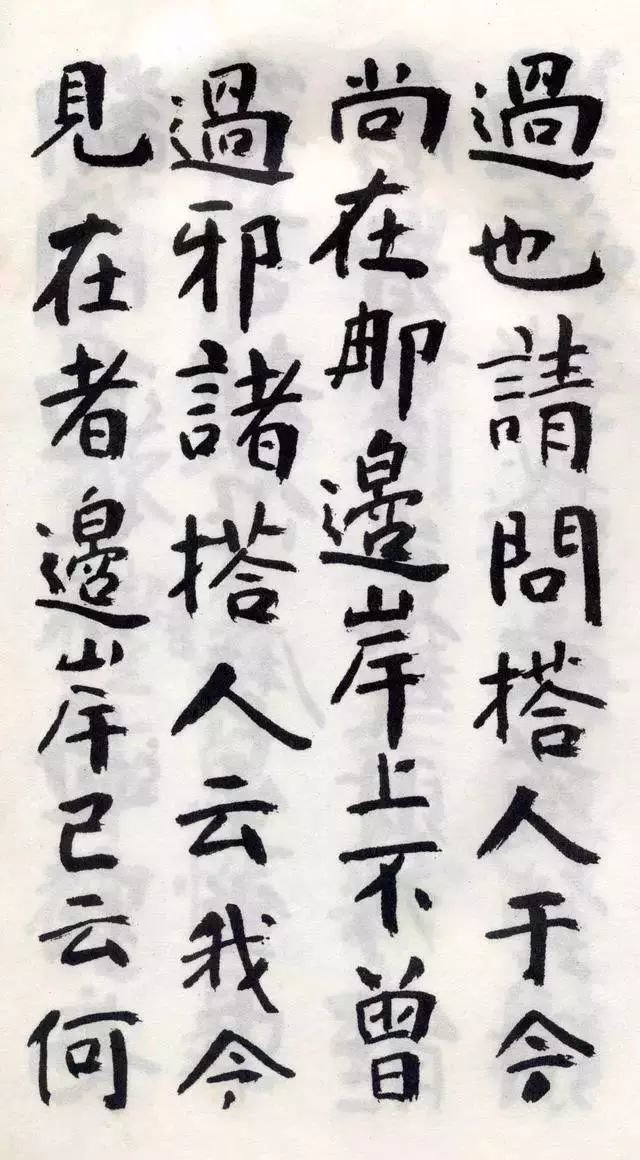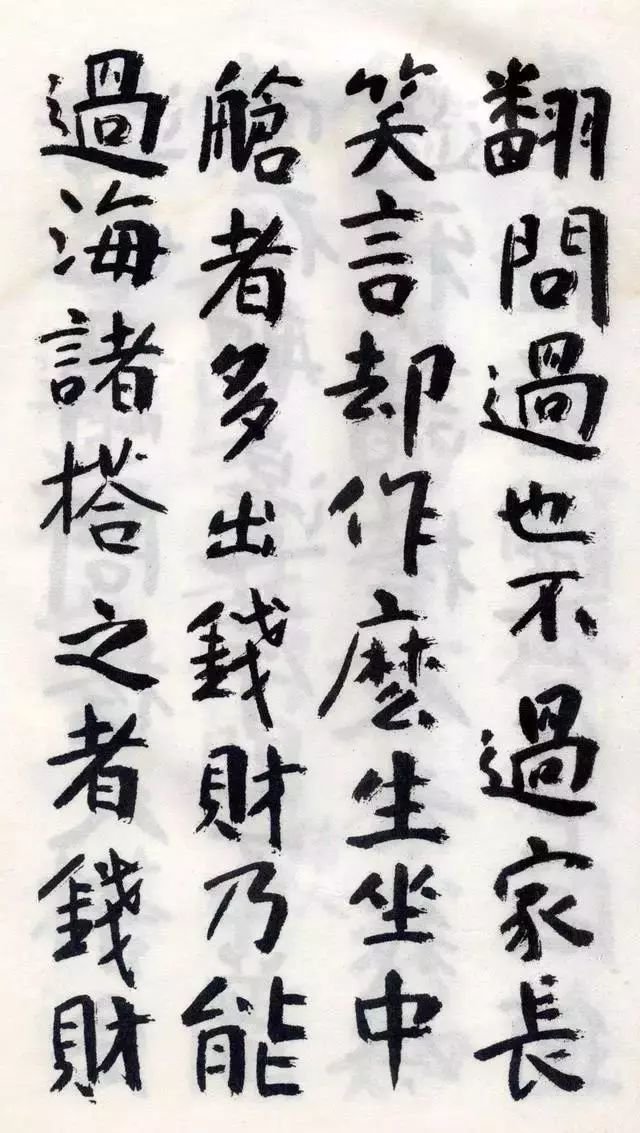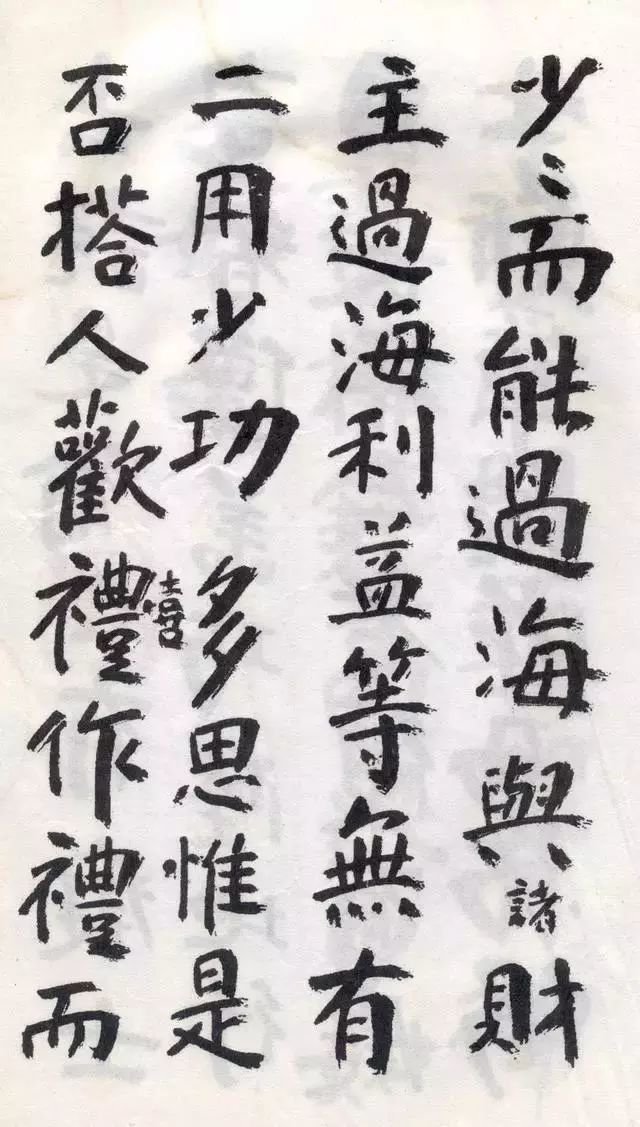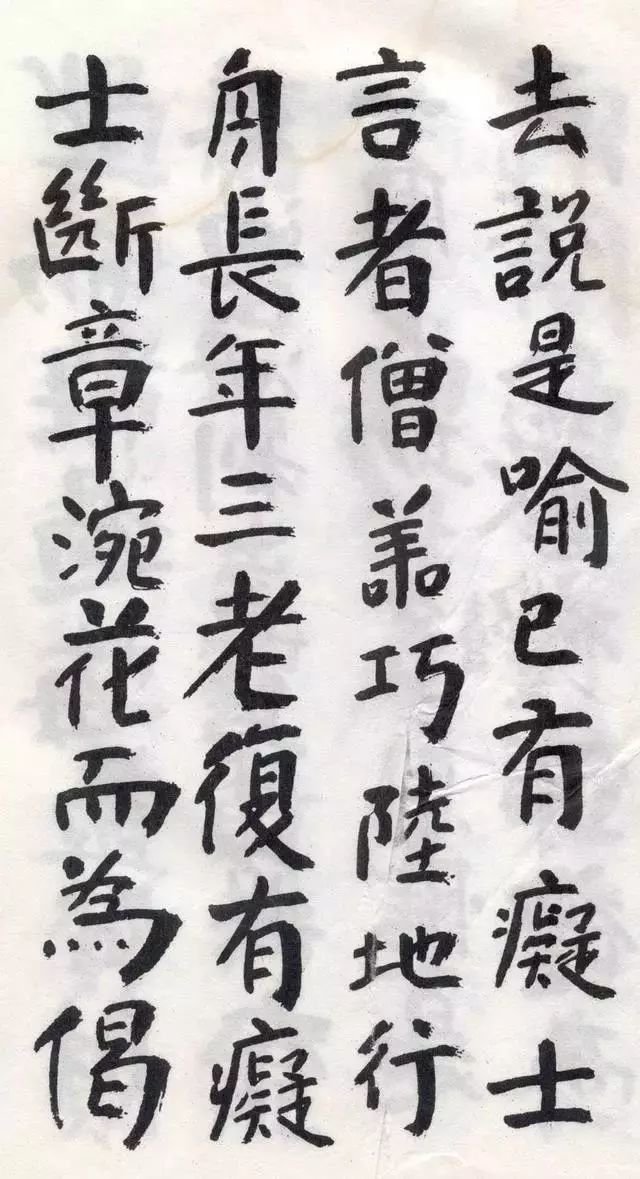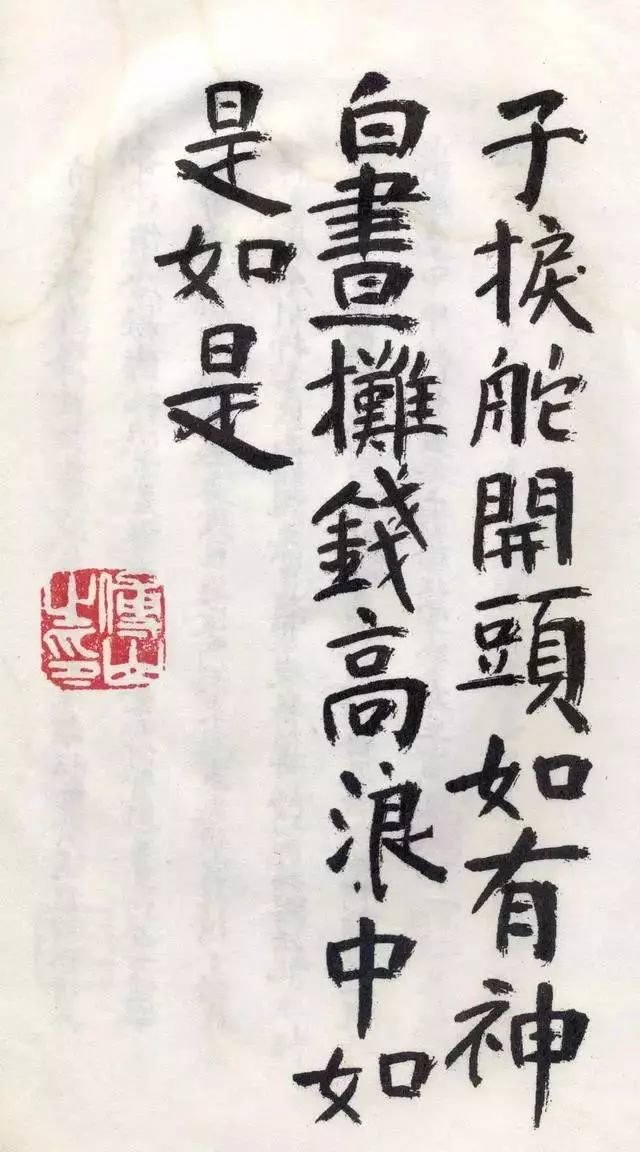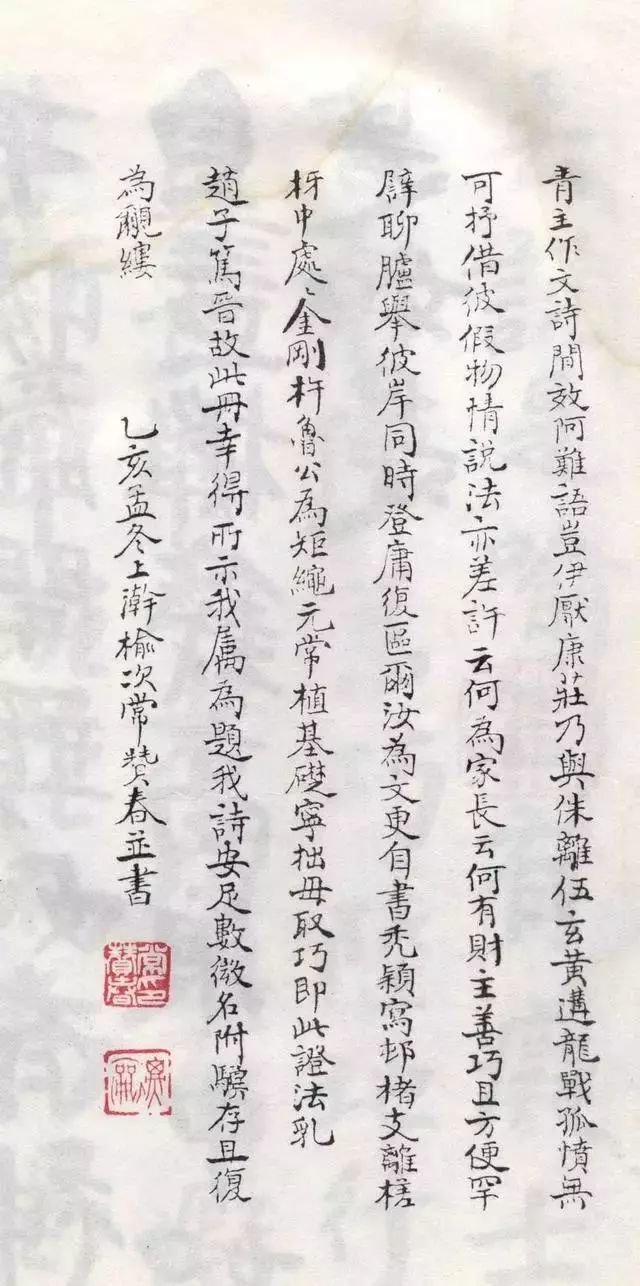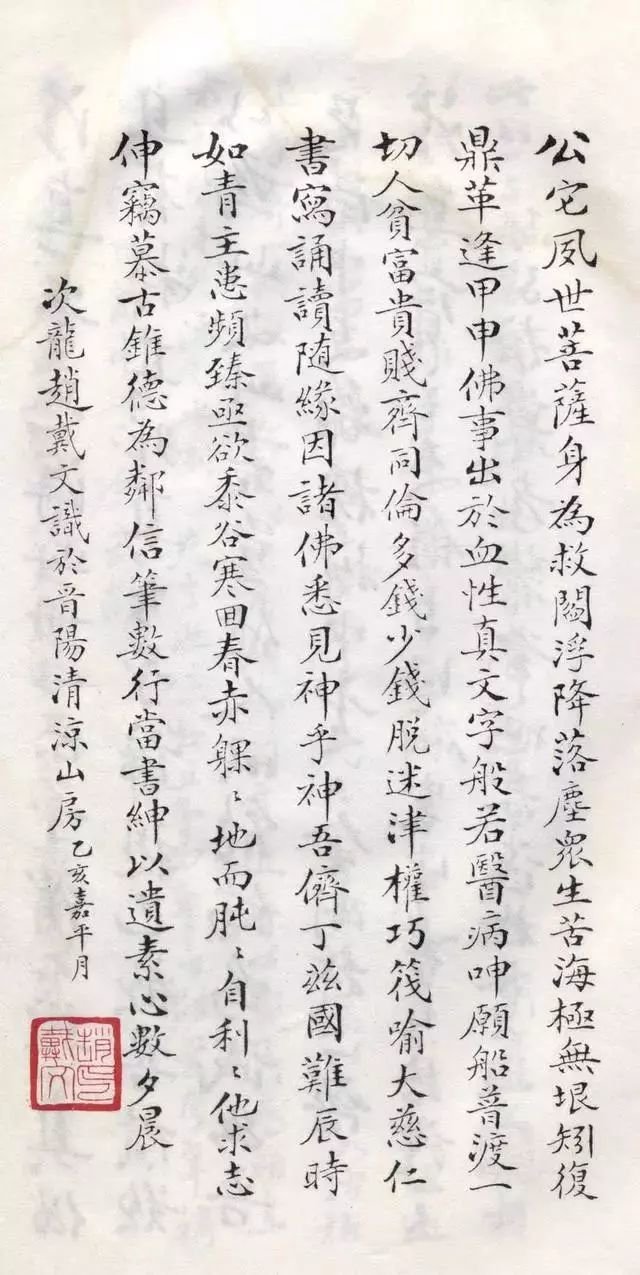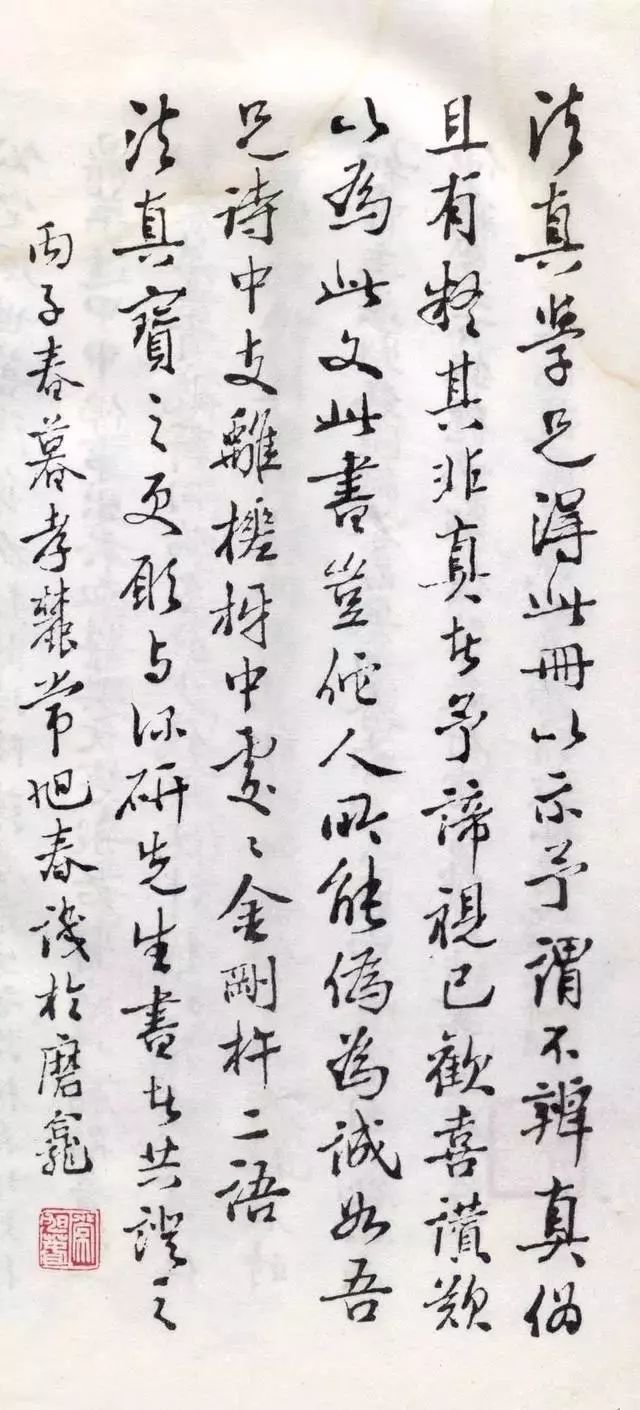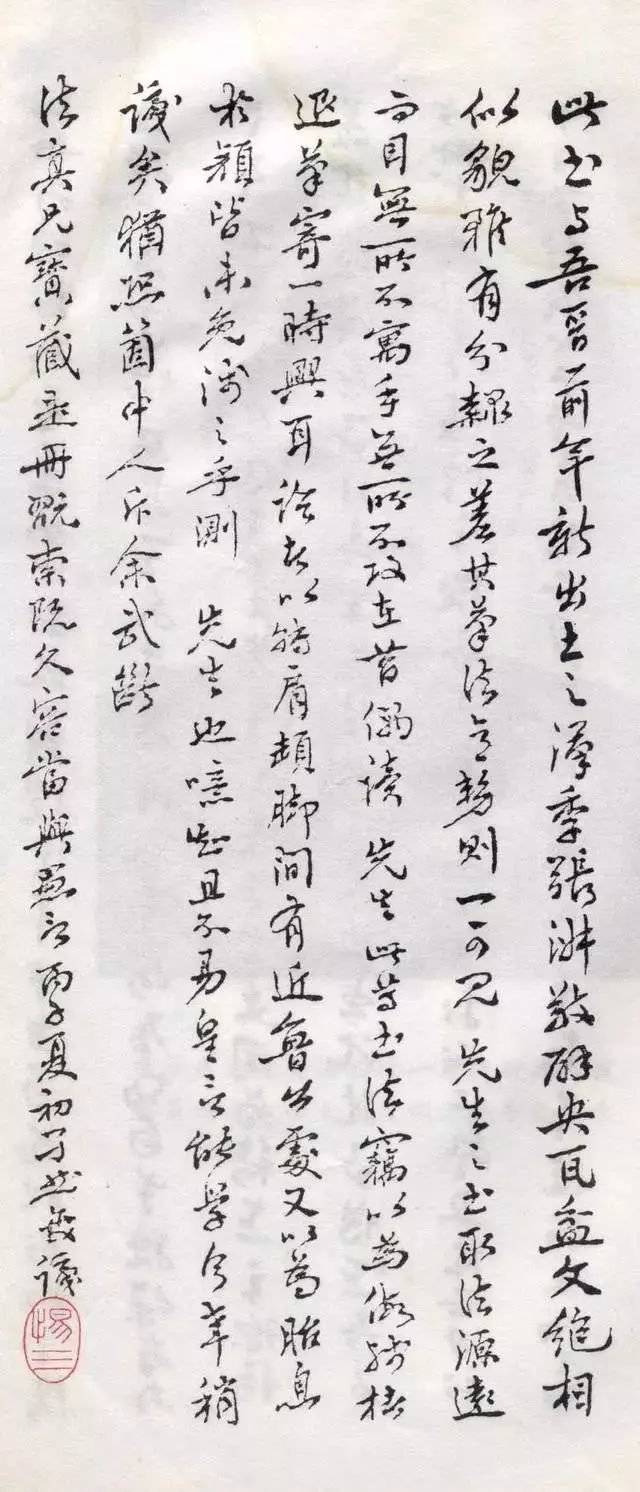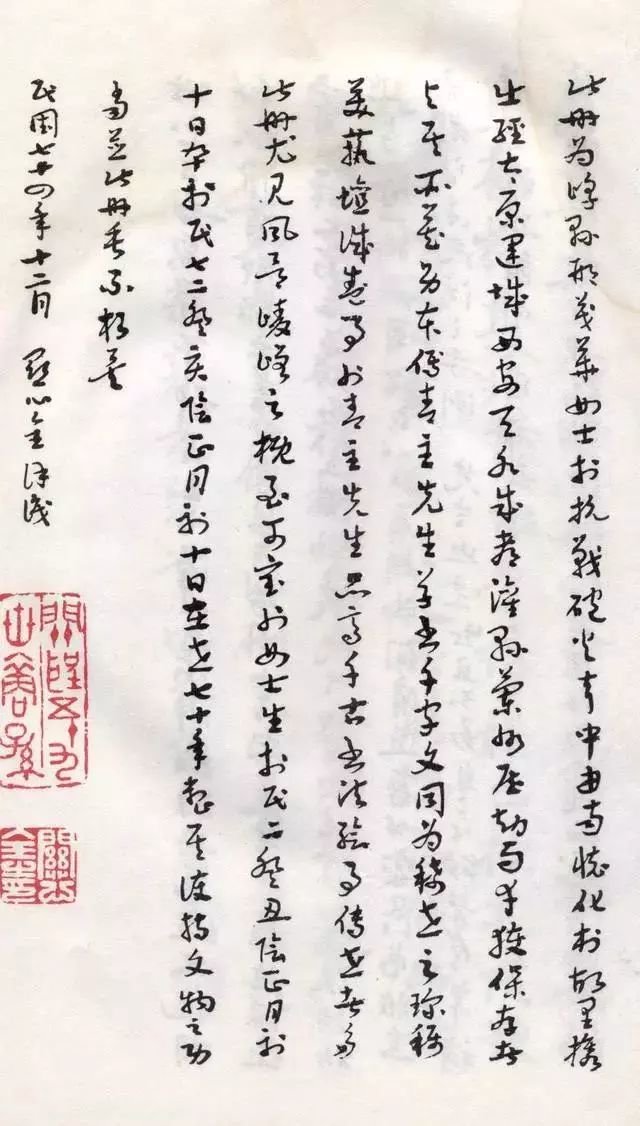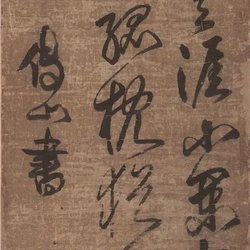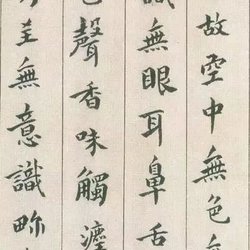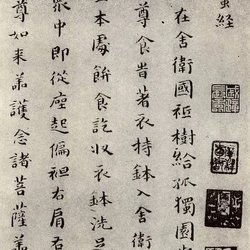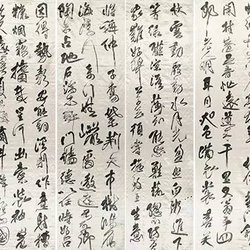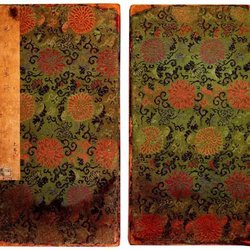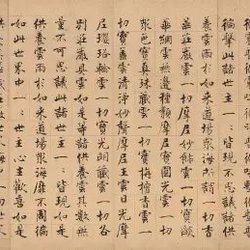As a survivor of the Ming Dynasty, Fu Shan chose Yan Zhenqing's calligraphy as a model. First, it was related to his respect for Yan Zhenqing's loyalty and ethics. Second, Yan Zhenqing's calligraphy style and some formal characteristics attracted Fu Shan. Fu Shan's enthusiasm for Yan's calligraphy style never faded. Even in his calligraphy in his later years, especially in small running script, Yan style calligraphy still dominates.
We can see from his facial style "Ananda Yin" that the strokes of the characters are plump, broad and thick. In the Tie Xue calligraphy tradition, many strokes in regular script often end with a hook, and hook is actually one of the most decorative strokes in regular script. Removing the hook does not affect the reading of the text. Fu Shan omitted many hook strokes in this work, which is extremely unusual in regular script. Due to the omission of the hook pen, the decorative nature of this work is greatly reduced, making it appear more primitive and clumsy.
From the work "Ananda Yin", Yan Zhenqing's calligraphy style can be seen in almost all the characters. You can feel Fu Shan's love for Yan Zhenqing's calligraphy style. This post is chosen as "Ananda's Chant", which is more casual, simple and natural than the "Xianwen" at the beginning of the text.
